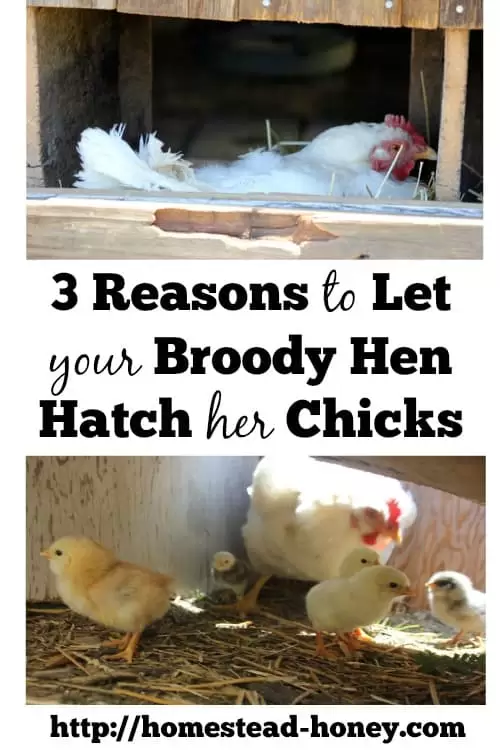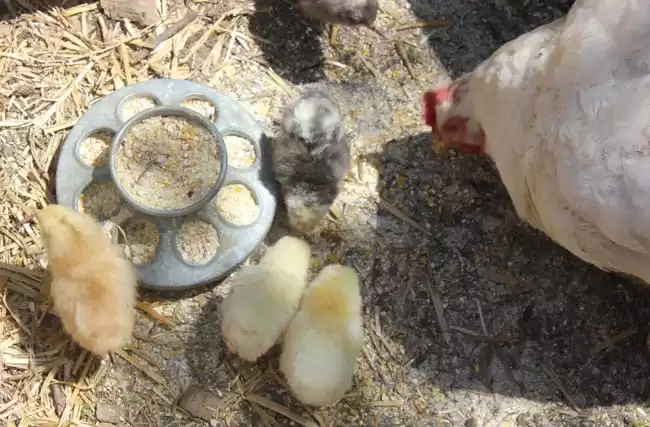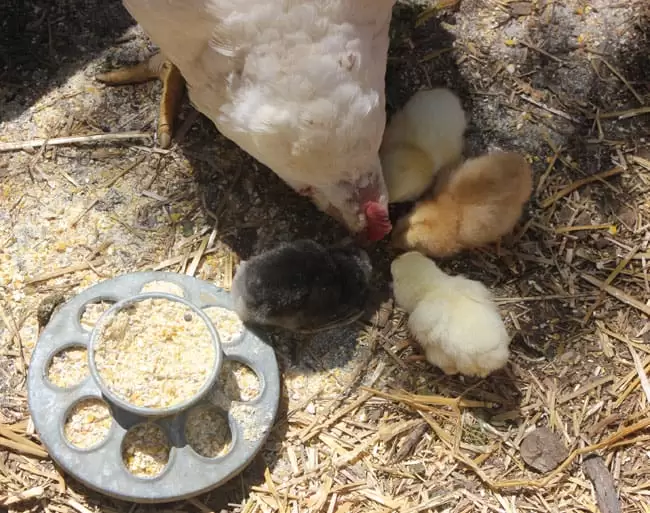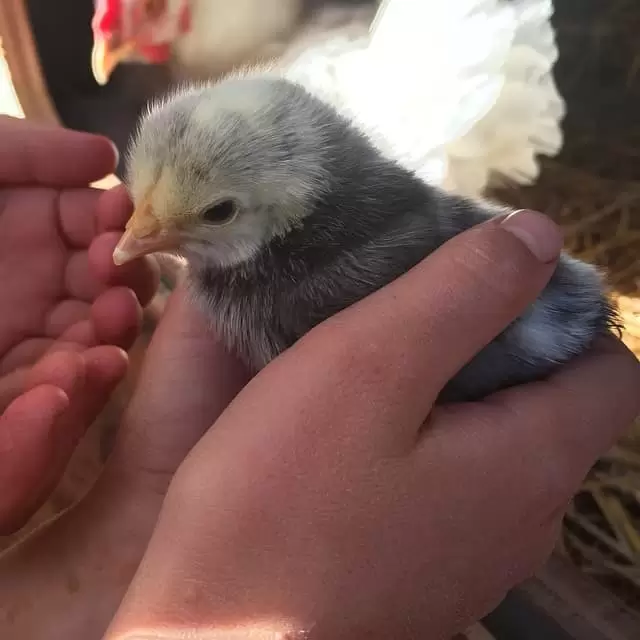Two years ago we purchased a couple of year-old hens. Soon after their arrival at our homestead, one of the hens went broody. We named her Broody, of course, and were delighted that she hatched four chicks. Broody has continued to be a reliably broody hen, sitting on eggs at least once per year.
This spring, we anticipated her broodiness with a plan: We would place a dozen or so eggs underneath her in hopes that about half would be roosters that we cull and eat. This is a very effective way for us to raise our own meat. We have very low cost, no extra work, and we can store the meat in the pasture until it’s ready to be eaten, typically in late fall – early winter.
While some consider broodiness a negative trait in a hen, mainly because a broody hen takes a break from laying eggs, we welcome a few broody hens in our flock.
These are my three top reasons why you should let a broody hen hatch her own chicks:
1) Broody hens do all the work! No need to raise chicks with heat lamps, incubate eggs, or clean up after messy chicks! It is such a time saver for our family.
2) Broody hens teach their chicks how to be great foragers. We allow our flock full access to our forest and pasture, which helps keep our feed costs low. At only three days old, Broody’s chicks are already pecking at grass and scratching in the dirt to find insects.
3) Broody hens save you money. Aside from giving chicks a bit of feed, we have no other costs associated with letting our broody hens raise their chicks. This spring, Broody hatched 8 chicks, saving us $20 in chick costs.
Honestly, the only disadvantage is that sometimes the offspring of broody hens are less sociable, as they are being raised by their mama, not a human. If you are looking for a chicken flock that is more pet-like or oriented towards humans, then raising day-old chicks might be a better option. We do let our kids carefully hold the chicks each day, which seems to help socialize them.
How do you get a hen to go broody?
Well, you can’t force a hen to go broody, but you certainly can try to provide situations that encourage broodiness, such as:
• Selecting chicken breeds that are known for broodiness. Some examples are Australorps, Brahmas, Buffs, or Cochins and bantam breeds such as Silkies, bantam Cochins or Orpingtons.
• Giving your hen a darkened, quiet and private place to lay her eggs.
• Placing “dummy” eggs in her nest box. You can use plastic easter eggs, or wooden eggs, or even a golf ball.
Broody hens are a great asset to a homestead, so take advantage of their amazing gift –
the gift of chicks!















I have a hen that just hatched her first chick, the nest box is to high for the chick to get in and out of. What should we do to get food and water to the chick. It’s getting very cold at night. What do you recommend we do to keep mom and baby together.
Kelly, the mom will keep the chick warm, so I wouldn’t worry about that. But what you can do is maybe make a temporary area for just the mom and chick – we usually do that for the first 3-4 days until the chick is big enough to hop up and down to stay with its mom. We also bring in a small waterer and a container for chick feed. Good luck!
We have a Pekin bantam who went broody when we were on holiday last week at the same time as our indian runner duck! We can only guestimate the arrival of chicks and ducklings and as this is a first time for us, we’re a bit anxious. We’re going to let nature take it’s course and leave both mums to it but is there anything else I should be doing? They share the same pen and coop, although duck has decided to bed down in a dust bowl outside the coop where we’ve build a temporary shelter over her. Will I need to keep the rest of the flock away and house them elsewhere when babies arrive? Advice or signposting would be much appreciated. Jo
That’s exciting!!
We typically move our broody hens into a smaller coop, so they can have some peace while they are brooding, and get acquainted with their chicks for a few days. 2-3 days after hatching, we reunite them with the larger flock. The mama hens are typically very protective, so it works out fine, and at 2-3 days old, chicks can move quite fast!
Good luck!
This is so true, I was just explaining this to my kids today as I out eggs under our two newly broody hens! The best part for me is not having to incubate or integrate.
My kids can’t wait until the hens get broody! Have fun with them!
I completely agree, Let nature do the work for you. I’ve got a hen right now that is comfy on a nice pile of eggs. She’s incubating my replacement hens. I like keep a younger flock and mainly raise chickens for depleting the bug population, eggs and meat. Great Article enjoyed!
Carole
I so agree! I deliberately get breeds that go broody and am disappointed if they don’t! We’re in the middle of moving out of state and our little Silkie has gone broody so we’re transporting her and her eggs in a tote box. You might be a homesteader if…
That sounds like a great plan! I’d do it too!
I agree with all of these! Since we don’t have a rooster, I have to get fertile eggs from a friend, but I’ve got an easteregger who’s raised 3 clutches so far, about one a year. She’s getting to the age when we would normally cull her out, but we keep her around because not having to hand raise chicks is awesome!
I would do the same! A consistently broody hen who knows how to be a great mama is invaluable!
We had a hen go broody twice last year and this year she started sitting in January. With our cold weather we decided it best to try to break her, which worked well . A few weeks ago she started sitting again but to our dismay she gave up after a few days. Another hen did the same thing shortly after. Now we have had a third hen go broody and she’s been sitting now a week and a half – hopefully she’ll stay sitting the full 21 days. I just love watching a hen with chicks!! So much more natural than incubated chicks. Any ideas why a formerly good broody would stop sitting?
We’ve had that happen a few times as well. My suggestion would be to be sure that she has a private and darkened area in which to sit. We usually move the broody hen to a different spot, so other hens don’t kick her off her nest box.
We just welcomed six new chicks a few weeks ago, using our broody hen.
As usual, I enjoyed your post.
That’s great news! Congratulations!
Another advantage, in my opinion, is that Mama integrates the chicks into the flock herself. That transition is always stressful for me!
That’s a great point, Heidi. I may edit my post to include this, as I totally agree that having mama hen navigate that transition is easiest!